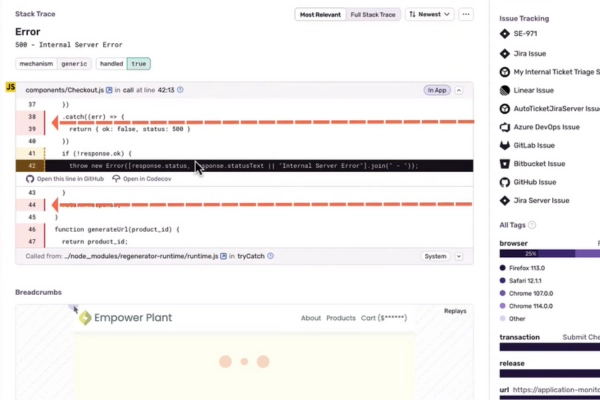When it comes to the business value of software testing, we’re not just talking about a technical process. It’s got a huge impact on your bottom line. Quality assurance guarantees your products are rock-solid. This leads to happy customers who trust your brand and become repeat buyers. Nobody likes dealing with glitches or bugs, right? So, reliable software leads to fewer complaints and returns, and that kind of dependability boosts your reputation, making you look like the caring person that you are, who is checking every detail.
But there’s more to it than just keeping customers happy. We’ve seen firsthand how effective testing can save substantial costs. By catching issues early in the custom software development process, we avoided expensive post-launch fixes and kept our customers satisfied. A study by IBM found that the cost to fix a bug found post-release is six times higher than one identified during development. In this competitive market, the ability to maintain operational continuity and deliver error-free products can be a significant advantage, setting your business as a trustworthy option.
Trust is a cornerstone of any successful business relationship. When clients see that you are committed to delivering high-quality software, it creates confidence in you. This trust translates into customer loyalty, repeat business, and positive word-of-mouth referrals. In an industry where reputation is everything, demonstrating your commitment to quality through rigorous software testing can set you apart.
If you’ve been grappling with quality control issues in your software or still think it’s a part of the process that might not need much attention, it’s time to reconsider. Let’s dive into software testing and how it can profoundly impact your business.

Cost Benefits of Effective Testing
Let’s face it: catching defects early in the development process is a game-changer. The cost and complexity of fixing issues are way lower when you find them early rather than after the software is out in the wild. Plus, early detection means you’re less likely to face cascading errors, where one bug leads to another, creating a tangled mess that’s both time-consuming and expensive to sort out.
Think about it: systematic testing also slashes the risk of failures in the production environment. These failures can be brutally expensive, not just in direct repair costs but also in lost productivity, compromised customer data, and a tarnished reputation. No one wants to deal with those headaches. So, software testing should not be seen as just another expense—it’s a smart investment in your product’s success and your company’s financial well-being.
Risk Management Through Testing
Diverse testing methods help companies anticipate and prevent problems like downtime, data breaches, and compliance issues, avoiding substantial legal troubles. Good testing practices allow businesses to proactively tackle these risks, ensuring that the software is solid and resilient against failures.
Have you ever wondered how your software would hold up under a sudden surge of users? Stress and performance testing can give you the answers, ensuring your application stays robust even under extreme conditions. These tests mimic different levels of usage and operational loads to ensure the software can handle both expected and unexpected traffic without breaking a sweat. This kind of preparation is crucial in industries where reliability is non-negotiable, such as banking, healthcare, and public services. We should know, we have been there. It helps avoid expensive downtime and ensures that essential applications run smoothly even in challenging conditions.
Performance Indicators
To gauge how well your software testing practices are doing, there are several key metrics you can track. These help you get a clear picture of the quality and efficiency of your testing processes. For example, metrics like defect density, test case coverage, and the average time it takes to detect and fix issues can really shine a light on how effective your testing is. If you’re catching lots of defects early on, that’s a good sign that your testing is preventing problems from surfacing later.
Other metrics like customer satisfaction scores and user engagement stats can tell you a lot about how your software performs in the real world. These numbers reflect how well your testing strategies are working to create a reliable and robust product. We can anticipate and be prepared for a lot when developing, but the end user can always find new angles in which they try to use the software. Keeping an eye on these metrics allows the team to continuously improve their testing processes and enhance their efforts.
Types of Software Testing
Software testing comes in various flavors, each designed to catch different kinds of issues across different parts of your application. Let’s break it down:
- Unit Testing: This is where the journey begins. Unit testing dives into the smallest components of your application to make sure they work as they should. It’s detailed and repetitive, so it’s usually automated to keep things efficient.
- Integration Testing: Once those individual units are tested, they don’t work in isolation, so integration testing comes next. Here, different units are put together to see how they interact. This helps spot any issues that crop up when units work together, not just in isolation.
- System Testing: With integration testing behind us, system testing comes into play. This involves testing the complete, integrated system to check if everything complies with the specified requirements. Think of it as a final walkthrough before the big performance, ensuring that every part works together smoothly.
- Acceptance Testing/User Testing: The final piece of the puzzle is acceptance testing, or sometimes user testing. This step involves checking if the solution works well for users and meets all the agreed-upon requirements. It often includes real-world scenarios and tests with end-users to ensure the software is ready for prime time.
Each of these testing types is crucial at different stages of the app development lifecycle. They all play a role in ensuring that the final product is robust, reliable, and ready for users.

Software Testing Tools and Technologies
The world of software testing today is packed with advanced tools and technologies that make the testing process more efficient and effective. Automation tools are fantastic for automating repetitive tasks, freeing up testers to tackle more complex scenarios. This not only speeds up the process but also enhances the thoroughness of tests.
In the case of continuous integration tools, the possibility of adding them to the ongoing development, testing, and deployment of software is a great achievement. They help teams manage changes smoothly and efficiently, ensuring that updates and new features are integrated seamlessly without disrupting the workflow.
In this field, Sentry is a significant player. It provides real-time insights into errors and performance issues, empowering teams to detect and resolve problems swiftly before they impact users. Sentry’s capabilities include error tracking, performance monitoring, and release management. It captures detailed error reports, including stack traces, environment specifics, and user context, giving developers the information they need to pinpoint and fix issues.
On top of that, advancements in AI and machine learning are starting to make waves in the software testing landscape. New tools are emerging that can predict potential problem areas in applications, optimize test cases, and even generate new ones based on patterns they observe.
The Role of Testing in Agile Development
Testing fits perfectly with the iterative and incremental nature of agile projects. Agile testing means evaluating the product at each stage of development, which allows teams to tackle issues right when they pop up. This ongoing feedback loop, one of the characteristics of an agile team, is key to enhancing the quality of the final product and making sure each release closely matches what customers want and expect.
Integrating testing into the agile process also helps teams quickly adjust based on feedback from you. This responsiveness and adaptability are crucial, helping to reduce development risks and ensuring that the software stays relevant and in line with your needs throughout the development cycle. Essentially, it’s about staying on top of things and making sure the software is always heading in the right direction.
Choosing the Right Software Development Partner
You want a partner who not only knows the ropes but has a solid track record in your industry and with the technologies you’re using. It’s important that they have the right infrastructure in place and the ability to scale their resources as your project needs to grow.
A great testing partner also communicates clearly and regularly, keeping everyone on the same page regarding goals, timelines, and what you can expect. Flexibility is another must—being able to adapt testing practices as your project scope changes ensures that everything stays relevant and effective. These qualities ensure that the testing process is thorough and precise, perfectly tuned to the unique needs of your business, leading to better results and a more dependable software product.
The strategic magnitude of such partnerships cannot be overstated as they provide the expertise, technologies, and methodologies essential for navigating the complexities of software development. So, if you are looking to perfect your software development, partnering with CodingIT could be the turning point you need. Reach out today and let’s join forces to create software solutions that exceed your expectations.
